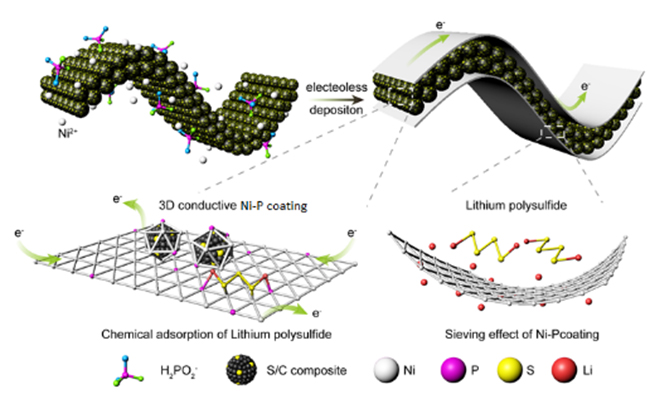The research group of Energy Storage Technology Research Department led by Prof. LI Xianfeng, Prof. ZHANG Huamin and associate professor ZHANG Hongzhang from Dalian Institute of Chemical Physics (DICP) of the Chinese Academy of Sciences achieved new flexible free-standing electrodes with high-loading active materials. Their findings were published in Advanced Functional Materials.
It is believed that nanoscale active materials have great application potential in the field of electrochemistry due to its high specific surface area and short ion/electron transportation channel. However, the nanoparticles are more likely to fall off from the electrode, especially for high-loading electrodes, which restricts its practical application.
To solve this problem, ‘phase inversion’ strategy was firstly reported by this group in 2016, which could realize ‘tricontinuous’ structured electrodes with strong binding strength, high flexibility and fast ion/electron transportation (Adv. Funct. Mater.).
Base on this novel strategy, flexible free-standing electrode was fabricated by this group in 2017. High-loading active material could be successfully carried in the electrode (such as 24 mg cm-2 sulfur), and it presented excellent electrochemical performance (Nano Energy).

Schematic function of electroless Ni–P deposition in the free‐standing flexible C/S electrode. (Image by GOU Jian)
Based on previous work, scientists further improved the conductive and current collection property in the ‘tricontinuous’ structured electrodes by means of in-situ electroless deposition technique. It could fabricate a 3D metal-based conductive network on the surface and inside of the electrode.
“This new finding could solve the practical issues existed in the flexible battery.” said Prof. ZHANG.
This novel method is facile, low-cost and easy for scalable fabrication. In addition, areal density of the conductive network is much lower than Al/Cu foil, nickel foam and so on. The weight of the energy storage device can be decreased. It is believed that this method had a very practical significance.
The above research work was supported by the National Natural Science Foundation of China, the Collaborative Innovation Centre of Chemistry for Energy Materials of the Ministry of Education (iChEM), the Youth Innovation Promotion Association of the Chinese Academy of Sciences and the Youth Innovation Foundation of Dalian Institute of Chemical Physics. (Text by GOU Jian)